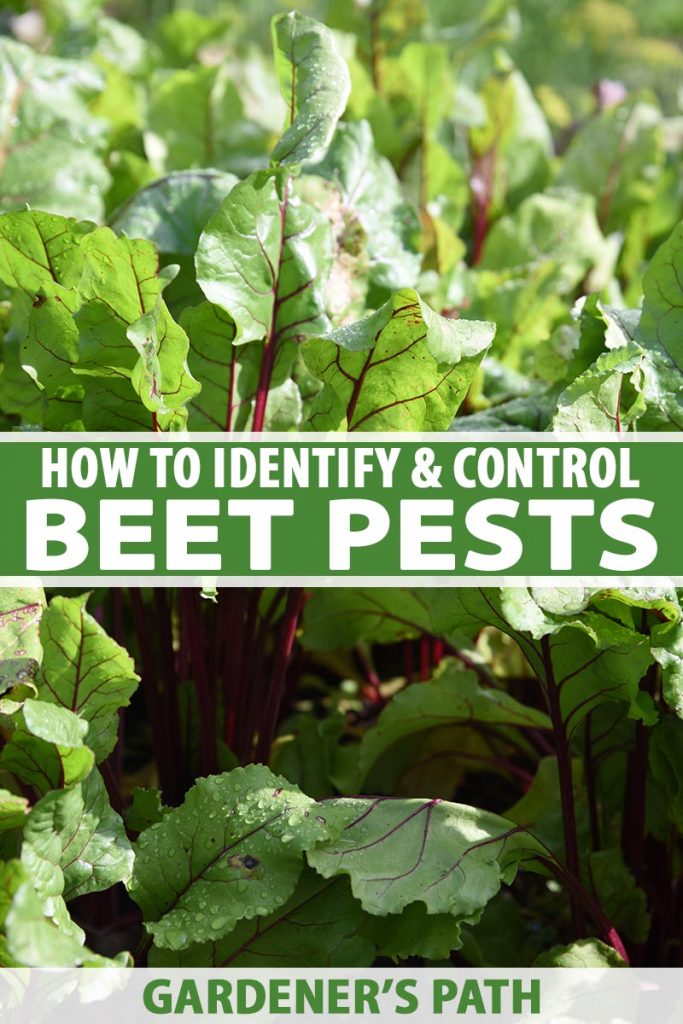
For a cool-season crop, it’s fairly exhausting to beat beets.
They’re fast to develop, and you may have a harvest in six weeks, to not point out the tops in addition to the roots are edible.
Plus, come on… they’re scrumptious, with that earthy, wealthy goodness.
As if that wasn’t sufficient to advocate them, they’re usually free from issues.
I say “usually” as a result of there isn’t a single plant that I do know that doesn’t have at the least a number of pests or illnesses that they’re inclined to.
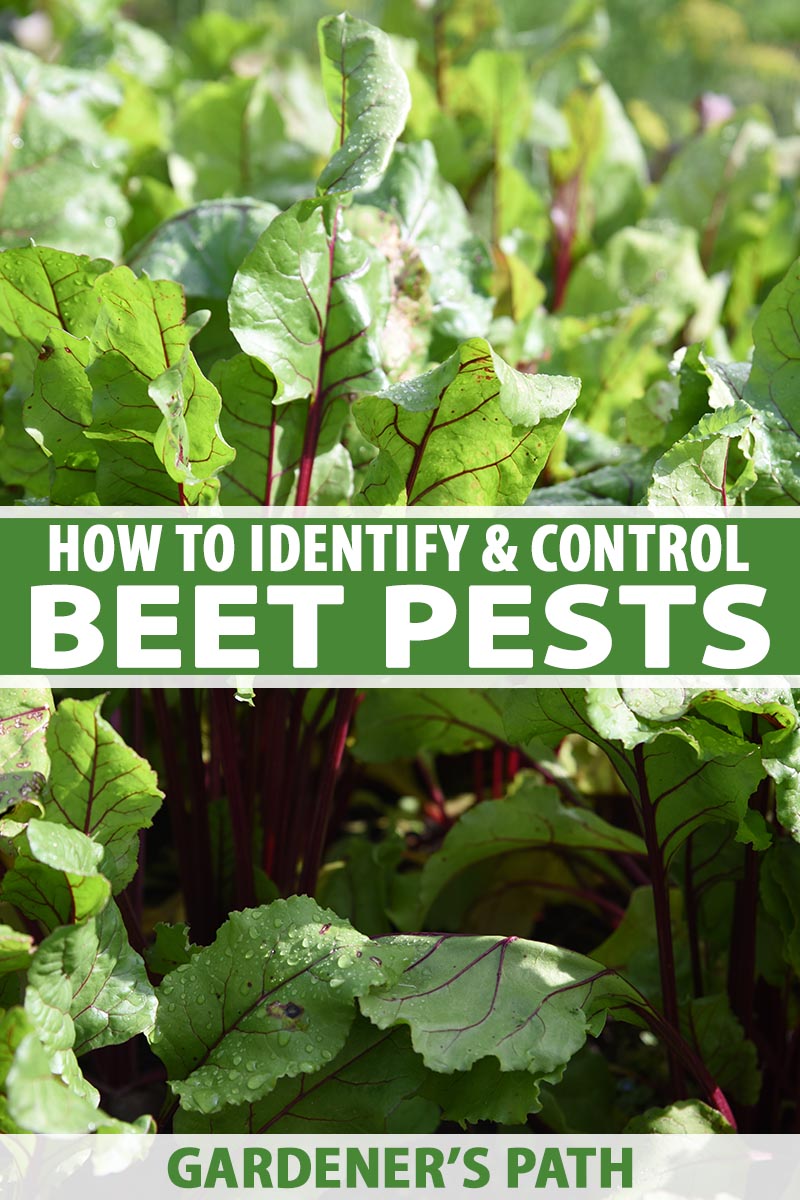
We hyperlink to distributors that can assist you discover related merchandise. When you purchase from certainly one of our hyperlinks, we might earn a fee.
Whilst you may not see them too ceaselessly, beets undoubtedly have their fair proportion of pests that can eagerly make a meal of them if situations are proper.
Listed here are a number of the commonest backyard foes you would possibly face:
I do know, this checklist appears fairly lengthy. However don’t let that discourage you. Whereas there are many bugs which will hassle beets, in my expertise, you received’t should take care of them that always.
That stated, should you do end up troubled by a creepy-crawly, this information will allow you to determine it and ship it packing.
1. Aphids
There are dozens of various species of aphids from the genera Myzus and Aphis that like to munch on beet vegetation. Inexperienced peach, melon, potato, cowpea, and bean aphids are all frequent.

Aphids vary in coloration from almost black to just about white, with some which are tan, orange, inexperienced, or crimson. All are tiny and pear-shaped. Some have wings, and others don’t.
They suck on the sap of vegetation, abandoning a sticky residue known as honeydew, which additionally attracts ants and creates the right setting for fungi. A big infestation might trigger leaves to twist and yellow. They will stunt leaf and root development as properly.
Blast the plant with a robust spray of water from the hose as your first line of assault. Generally you’ll be able to knock them free, and so they received’t return.
You also needs to encourage useful bugs like parasitic wasps, ladybugs, lacewings, soldier beetles, and syrphid flies to go to your backyard.
Nonetheless have an issue? Dusting vegetation with flour or wiping the stems and undersides of leaves with canola oil can assist.
When you determine to go the chemical route, know that pesticides can kill good bugs in addition to the dangerous ones.
Our information to dispelling aphids can assist you determine the most effective choices for you and your backyard.
2. Beet Cyst Nematodes
Beet cyst nematodes (Heterodera schachtii) are soil-borne, microscopic organisms that may trigger leaves and roots to be stunted and malformed.

On prime of that, you might even see older leaves wilt and switch yellow.
When you dig up your vegetation and see that the roots have yellowish cysts, together with a number of of those different signs, you seemingly have a nematode drawback.
When you do, there isn’t something you are able to do about your present crop, however you’ll be able to forestall points sooner or later.
First, dig up your soil to 2 toes deep and switch it over in order that it’s uncovered to the solar. Let it sit for per week. Do that a number of occasions earlier than planting there once more. Solarization of the soil helps to kill off the nematodes.
Subsequent, rotate your crops in order that nothing within the Beta genus grows there for 3 years.
3. Beet Leafhoppers
The beet leafhopper (Circulifer tenellus) is a tiny pale inexperienced or tan bug with darker, blotchy markings. It’s a couple of tenth of an inch in size, with translucent wings.
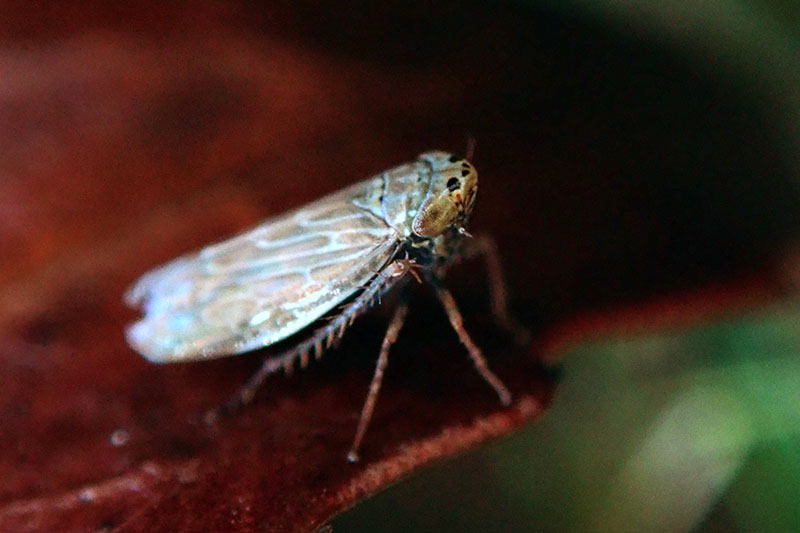
The adults will feed on the leaves, however that’s not probably the most urgent concern when you’ve got these in your backyard.
They unfold beet curly prime virus, an usually devastating illness that causes vegetation to show yellow and cease rising.
They’re commonest in western components of the US and Canada, and all through Mexico.
Be certain to take away any weeds or particles out of your backyard within the fall on the finish of the season, and in spring earlier than planting. Then, use floating row covers whereas your beets are rising.
Sadly, you’ll want to tug any vegetation which are contaminated with the virus. They received’t get well from this an infection and their continued presence within the backyard can contribute to additional unfold of the illness.
4. Beet Webworms
Beet webworms are the larvae of moths within the Crambidae household.
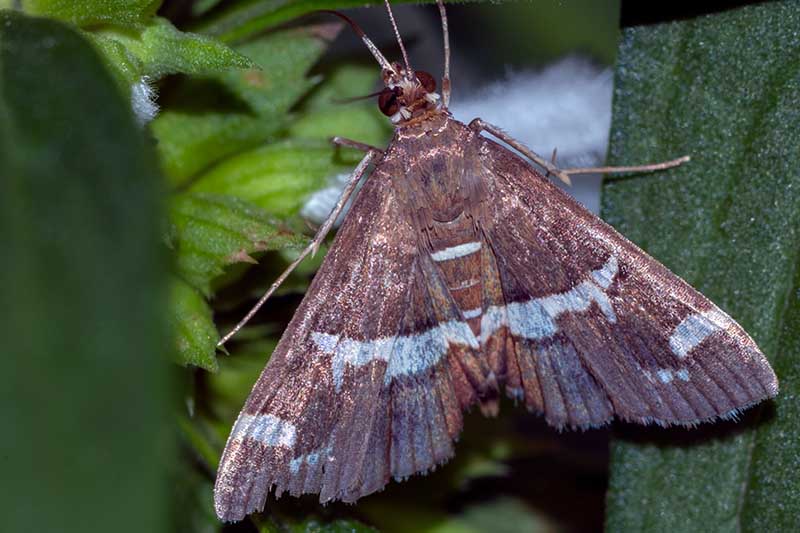
There are a number of completely different species which will assault your vegetation, together with the noticed beet moth webworm (Hymenia perspectalis), the Southern beet moth webworm (Herpetogramma bipunctalis), Hawaiian beet moth webworms (Spoladea recurvalis), the sugar moth webworm (Loxostege sticticalis), alfalfa moth webworms (Loxostege cereralis), and the backyard moth webworm (Achyra rantalis).
All of them reside primarily in hotter areas, just like the southern and western US, although they will journey as far north because the southern Canadian border in the summertime months.
The worms chew via leaves, and so they can skeletonize a plant quickly if there are sufficient of them.
Additionally they curl or bind leaves collectively, and use silky threads to make a comfortable spot to cover. You would possibly come outdoors in the future and uncover that your vegetation are coated in these nest-like webs.
Nonetheless, this isn’t a nest that the worms create to be able to pupate. They try this underground, the place they type cocoons. As a substitute, these are properties the place they shelter in between meals. When you look intently, you’ll seemingly have the ability to spot them hanging out inside.
As a result of the leaves are all sure up or chewed via, not solely can this gradual development, however you received’t have the ability to take pleasure in all these tasty beet leaves when you’ve got an infestation.
The webworms range in look, with some being olive inexperienced whereas others are yellow or vibrant inexperienced, generally with black stripes. They vary from just below an inch lengthy to an inch and a half lengthy.
Since all of them look completely different, the simplest strategy to determine them (moreover on the lookout for the telltale curled leaves) is to disturb them.
When you attempt to contact one of many worms, it’ll drop from the plant by a silky thread and cling within the air.
You can even preserve a watch out for tan or brown moths flitting round your vegetable patch, and put out yellow sticky traps to nab one or two so you should utilize the grownup moth to determine which insect you’re coping with.
Thankfully, by the point the larvae hatch and mature, beets have often had an opportunity to develop sufficient that the roots will nonetheless be totally fashioned, regardless of any harm to the foliage above floor.
Root harm is often uncommon, however when you’ve got a extreme infestation that has utterly defoliated your vegetation, you possibly can lose your crop.
When you don’t wish to lose any beet leaves, or when you’ve got vegetation which are being defoliated quickly sufficient that you simply’re nervous this might stunt root development, you’ll be able to use Bacillus thuringiensis to regulate them.
Simply be sure you comply with the producer’s instructions and tips whenever you apply it.
5. Blister Beetles
Blister beetles are small pests, half an inch to an inch lengthy, that may be grey, tan, black, or crimson, striped or noticed. There are dozens of species within the Meloidae household that feed on vegetation.

The excellent news is, in addition they eat grasshopper eggs. The dangerous information is that they’ve a toxin on their exteriors known as cantharidin that may irritate your pores and skin, and hurt livestock in the event that they ingest it.
The adults feed on foliage beginning within the midsummer, so in case your beets are out of the bottom earlier than then, you received’t have to fret about this pest. However for summer season or fall crops, be looking out.
Except they’re critically defoliating your beets, you’ll be able to placed on a pair of gloves and choose these pests off of vegetation should you see them.
Monterey Take Down Backyard Spray
In case your beets are closely impacted, use a pesticide that accommodates pyrethrins, like Monterey Take Down Backyard Spray, accessible at Arbico Organics.
6. Cutworms
Cutworms are the larvae of flying night time moths within the Noctuidae household. They chew via the bottom of beet foliage on the soil degree, killing the vegetation.

They vary in coloration from mild grey to vibrant inexperienced or darkish brown, and should you look intently, their pores and skin seems to have a greasy texture. All are about an inch or two lengthy and so they haven’t any hair, in contrast to another varieties of caterpillars.
When you disturb them, they curl up right into a protecting little “C” form.
They are often exhausting to identify as a result of they solely come out at night time. Most frequently, what occurs is you come outdoors to examine your backyard within the morning, solely to find your beet foliage mendacity useless on the bottom.
Some cutworms feed on younger leaves and stems, along with reducing the stems down.
As a result of they will kill a complete plant in a single day, you don’t wish to fiddle should you discover you’ve gotten these within the backyard.
As a preventative step, begin by clearing the planting space of any weeds earlier than you sow your seeds. All through the rising season, be sure you preserve any weeds at the least three toes away out of your beets.
At planting time, you also needs to go away a three-foot-wide naked patch of soil in between your beets and the garden. That is vital if you’re rising your beets within the floor, or in raised beds which are open on the underside, in an space close to the place grass is rising.
Cutworms like to cover in grass and weeds, however they received’t journey throughout a large expanse of open floor that leaves them uncovered.
Subsequent, the simplest technique to maintain them away out of your beets can also be surprisingly easy: You need to use cardboard or a plastic container to create a barrier. I like to make use of waxed milk cartons or plastic water bottles as a result of they received’t disintegrate within the rain.
Reduce the highest and backside off, leaving about 4 inches of the container size intact. Sink the container an inch deep into the soil, and plant your seedling or seeds within the heart.
Usually, we don’t advocate transplanting beets since they’re root greens. However on this case, it’s definitely worth the effort of beginning seedlings in containers because the different might be dropping your vegetation fully.
To make issues simpler in your beet transplants, begin them indoors in biodegradable pots. Then, rigorously reduce out the underside of the pot with out disturbing the creating root, and put the entire thing within the floor, with a protecting collar round it.
You can even scatter diatomaceous earth round your vegetation as an added barrier, however you’ll must reapply it ceaselessly, after durations of rain or after watering.
Study extra about cutworm infestation prevention and management right here.
7. European Corn Borers
Don’t let the title idiot you – Ostrinia nubilalis likes to eat excess of simply corn. And these pests don’t simply reside in Europe.
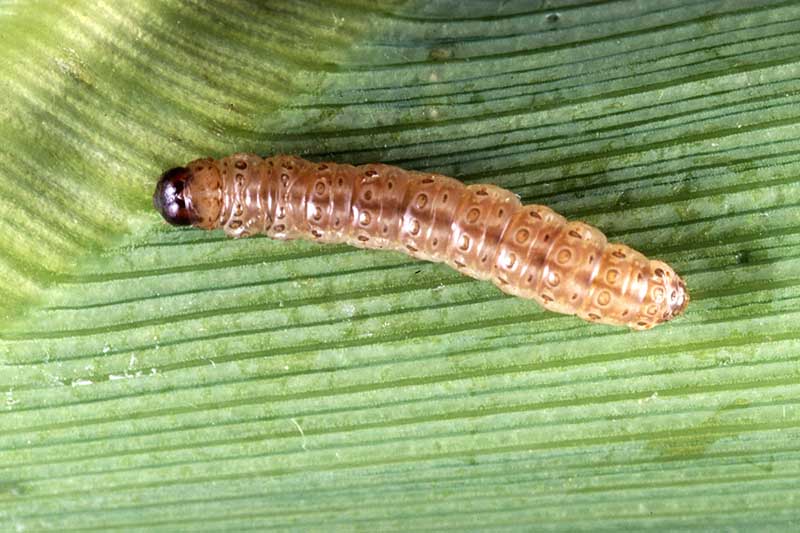
These bugs first made their strategy to the US from Europe within the early 1900s, and now thrive in all places east of the Rockies, from Canada right down to Mexico. Many western states have a quarantine in place to attempt to restrict their unfold.
Thankfully, they solely pupate on corn vegetation within the spring, so should you don’t have any corn rising in or close to your backyard, you seemingly received’t have to fret about them.
The larvae, which do all of the harm, are pinkish-brown with black dots on their our bodies and brown heads. The adults are inch-long yellow or brown moths.
Whereas the larvae will bore into above-ground veggies like corn and peppers, they solely eat the foliage on beets.
Handpick these little pests should you spot them. The dangerous information is that there are often two or three generations every year, so it is advisable to be diligent.
Lacewings and ladybugs like to munch on these pests, so do your greatest to encourage these useful bugs to take up residence in your backyard.
Tiny Trichogramma wasps will parasite the eggs, and you should buy and launch these backyard helpers to maintain corn borers underneath management.
You should buy parasitic wasps from Arbico Organics.
If all that fails, escape the Bacillus thuringiensis.
8. Flea Beetles
Flea beetles get their title as a result of they leap round like fleas whenever you disturb them. However as an alternative of nibbling in your furry buddies, they like to nibble on the leaves of a spread of vegetation, abandoning tiny shotholes.
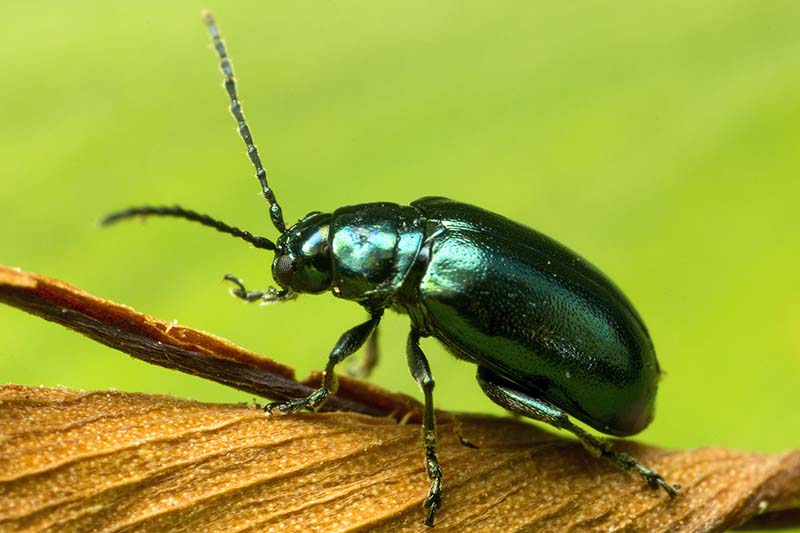
Whereas this may increasingly not sound too dangerous, they will harm your beets sufficient that the roots shall be stunted, or they will even kill your vegetation. Seedlings are notably weak.
There are dozens of sorts of those little bugs, however the harm they trigger and accessible management strategies are the identical for all sorts.
Floating row covers are by far your most dependable and efficient possibility. Put them in place whenever you plant your crops, and go away them there till you’re prepared to reap.
Entice crops are additionally efficient. Plant radishes, that are a favourite of flea beetles, a number of toes away out of your beets to attract them away.
Along with this, measure out a couple of foot from the bottom of your beet vegetation and scatter diatomaceous earth round them in a hoop, making a 12-inch “moat” round your beets.
In case you have a number of vegetation, prime the soil between them with diatomaceous earth and prolong the DE ring a foot past the sting of the vegetation. The objective right here is to create a barrier that the beetles can’t leap over, and that can kill them in the event that they cross.
You’ll must reapply it each few days or after rain.
Learn extra about flea beetles and methods to eradicate them.
9. Leafminers
Leafminers are the larvae of flies from the genera Liriomyza and Pegomya. These little pests chew tunnels in winding, maze-like patterns via the leaves of beet vegetation.
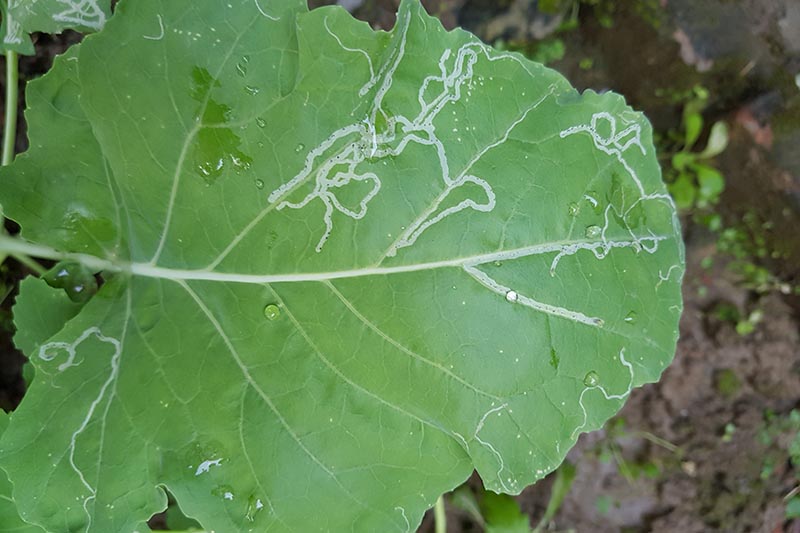
Discovering a number of of them isn’t actually an issue. You’ll be able to simply crush the tunnel pathways that you simply discover together with your fingers to kill the little bugs, or take away broken leaves.
But when they get into your vegetation early within the season when younger seedlings are probably the most weak, or when you’ve got a variety of them, this could scale back the scale of your beetroots and trigger leaves to drop.
The actually dangerous information? There will be as much as 10 generations of those bugs every year.
Floating row covers are an efficient strategy to preserve the flies from touchdown in your vegetation and laying eggs, however you’ll must get your covers on proper whenever you put your seeds or seedlings within the floor, and preserve them there till you harvest.
A weekly utility of neem oil may assist preserve them underneath management. Observe the producer’s dosage and mixing suggestions.
Learn extra about controlling leafminers right here.
10. Rove Beetles
Rove beetles, also called darkling beetles, are a bunch of half-inch bugs from the genera Blapstinus or Staphylinid which have bluish-black or darkish brown carapaces.
They principally disguise throughout the day and come out at night time to feed on stems and seedlings.
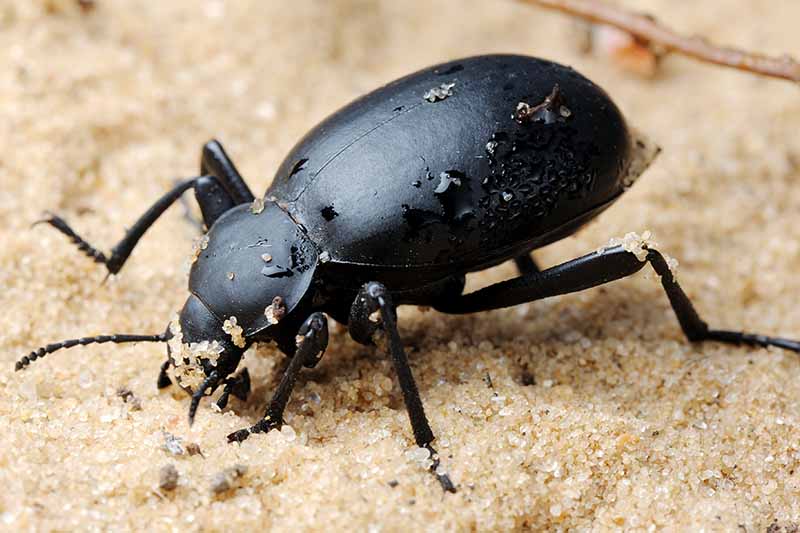
They aren’t all dangerous – they can assist out farmers who’ve livestock by turning feces into usable manure. However in your vegetable patch, they aren’t so welcome.
You’ll be able to dig a ditch round your backyard and fill it with water to maintain these bugs out. However be aware that you need to keep away from this system throughout the time of 12 months when mosquitoes are out laying their eggs, otherwise you’ll create a great setting for them to breed.
You also needs to preserve weeds away so that they received’t have a spot to cover.
Whereas they often aren’t a serious drawback, should you discover that they’re actually doing a quantity in your crops, a pesticide containing carbaryl – like Sevin – will kill them.
Carbaryl is a potential carcinogen and the producer recommends to not use it inside seven days of harvest for roots and 14 days for greens. Personally, I might solely use this as a final resort.
Prepared-to-use Sevin Mud is accessible on Amazon.
11. Seed Corn Maggots
The seed corn maggot (Delia platura) assaults quite a few crops that develop underground. These pests eat germinating seeds and may completely destroy a crop earlier than it even will get began.
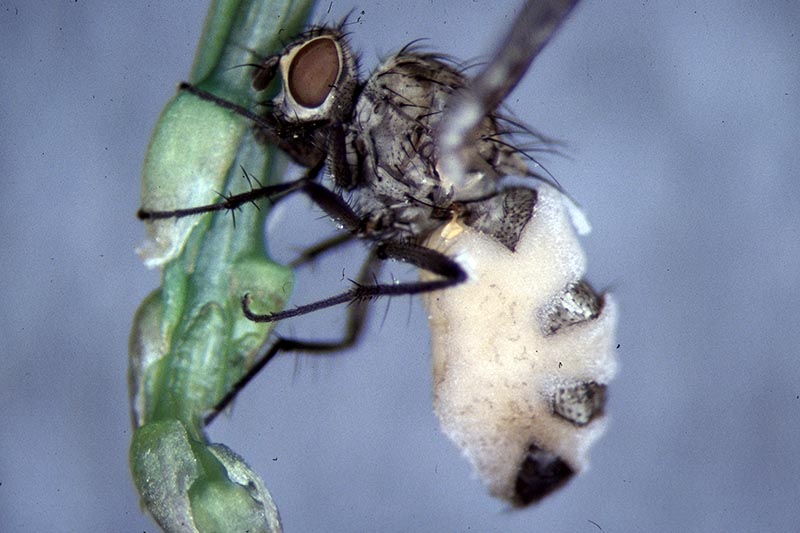
Seed corn maggots are a couple of quarter-inch lengthy and whitish-yellow. The maggots overwinter within the soil and emerge within the spring to eat and reproduce. There will be as much as 4 generations per 12 months.
In case your seedlings don’t emerge, dig the seeds up and look to see if there are maggots inside. Because the pest is bigger than a beet seed, they’ll be apparent. You’ll in all probability see them with their heads burrowed into the seed and the remainder of their physique protruding.
That is one of the simplest ways to substantiate that you’ve this pest and your seeds didn’t fail to emerge due to damping off or another drawback.
When you do have them, you’ll be able to keep away from issues with these pests by beginning new seedlings indoors, and transplanting them outdoor when the vegetation are a number of inches tall.
12. Spider Mites
Spider mites (Tetranychus spp.) are a particularly frequent and hard-to-spot pest.
Whereas quite a few species of mites will assault beets, you’ll mostly see strawberry spider mites and two-spotted spider mites.
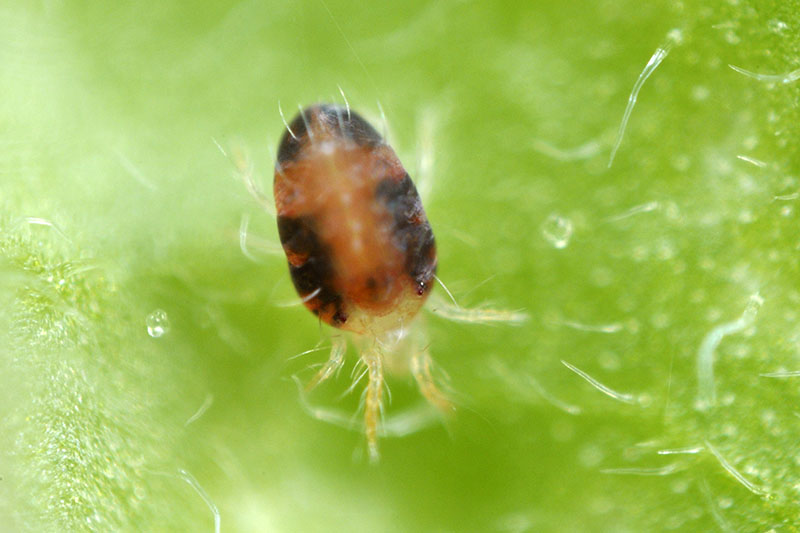
These spider family weave webs, that are the primary stuff you would possibly discover when you’ve got an infestation.
Whatever the number of mite that pays your crop a go to, all of them do the identical sort of injury. They eat from the undersides of leaves, which may trigger white or yellow spots on beet foliage. This harm can ultimately merge and trigger leaves to drop.
Spider mites search for confused vegetation, notably these rising in sizzling, dry situations. They use their needlelike mouthparts to suck the fluid out of vegetation.
Ladybugs, thrips, pirate bugs, and lacewings all eat spider mites. When you discover an infestation, this is usually a signal that their pure enemies have been eradicated from the backyard, usually via the usage of chemical pesticides.
When you preserve your beets properly watered and don’t use pesticides in your backyard, this can go a good distance towards conserving spider mites away.
When you spot a number of webs in your vegetation, spray them off with a robust blast of chilly water. Listen specifically to the undersides of leaves, the place mites like to hang around.
When you want one thing a little bit stronger, strive a weekly utility of neem oil.
13. Vegetable Maggots
Vegetable maggots (Delia radicum) feed on the roots of vegetation – which is dangerous information should you had been planning to eat these roots!
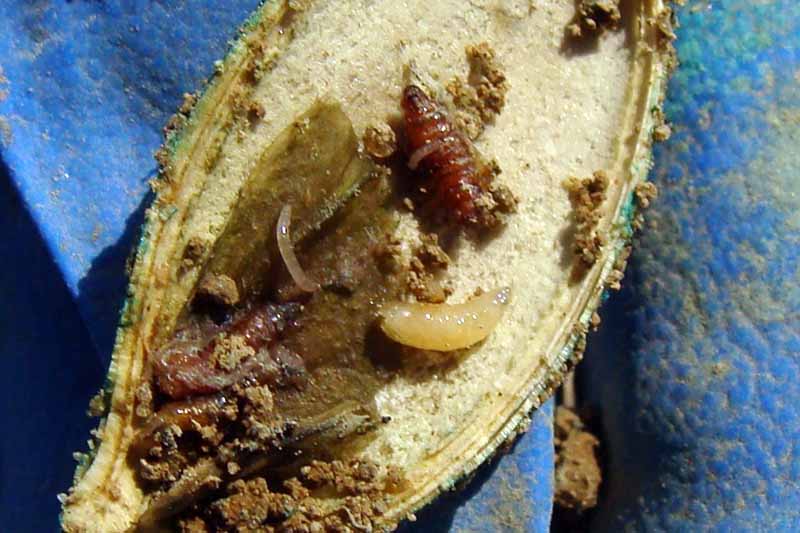
Like its cousin the seed corn maggot, this sort overwinters within the soil and emerges within the spring to eat. It appears virtually similar to the seed corn maggot as properly, a couple of quarter-inch lengthy and cream-colored.
These maggots chew tunnels into the floor of beetroots and utterly devour the finer root hairs. Above floor, vegetation will look stunted, wilted, and weak. Leaves might flip yellow or mottled, or they could have purpling on the perimeters.
Not solely do they harm vegetation, these pests may introduce illnesses.
You’ll be able to place yellow sticky traps at floor degree within the backyard to draw the maggots. Catching a number of will make it simpler to determine them.
Strive putting traps a number of inches above the bottom to catch a number of adults as properly. Often called cabbage or root flies, they’re a couple of quarter-inch lengthy, with gray-brown coloring.
To forestall an infestation, wait to transplant beets into the backyard till late Could to keep away from the rising maggots. When you don’t reside in a cool sufficient local weather to do that, use floating row covers within the fall and spring to stop the grownup flies from touchdown and laying eggs.
Within the winter, until over the soil to show the overwintering pupae.
Crop rotation may even allow you to to maintain vegetable maggots underneath management. Don’t plant beets the place another beet or brassica vegetation have been grown for at the least 4 years after you uncover an infestation.
You’re Able to Beat Again Beet Bugs
Okay, we will’t deny that beets might face fairly a number of pesky foes, however don’t let that deter you.
Infestations are unusual, and as soon as you understand what you’re coping with, you’re midway to fixing the issue.
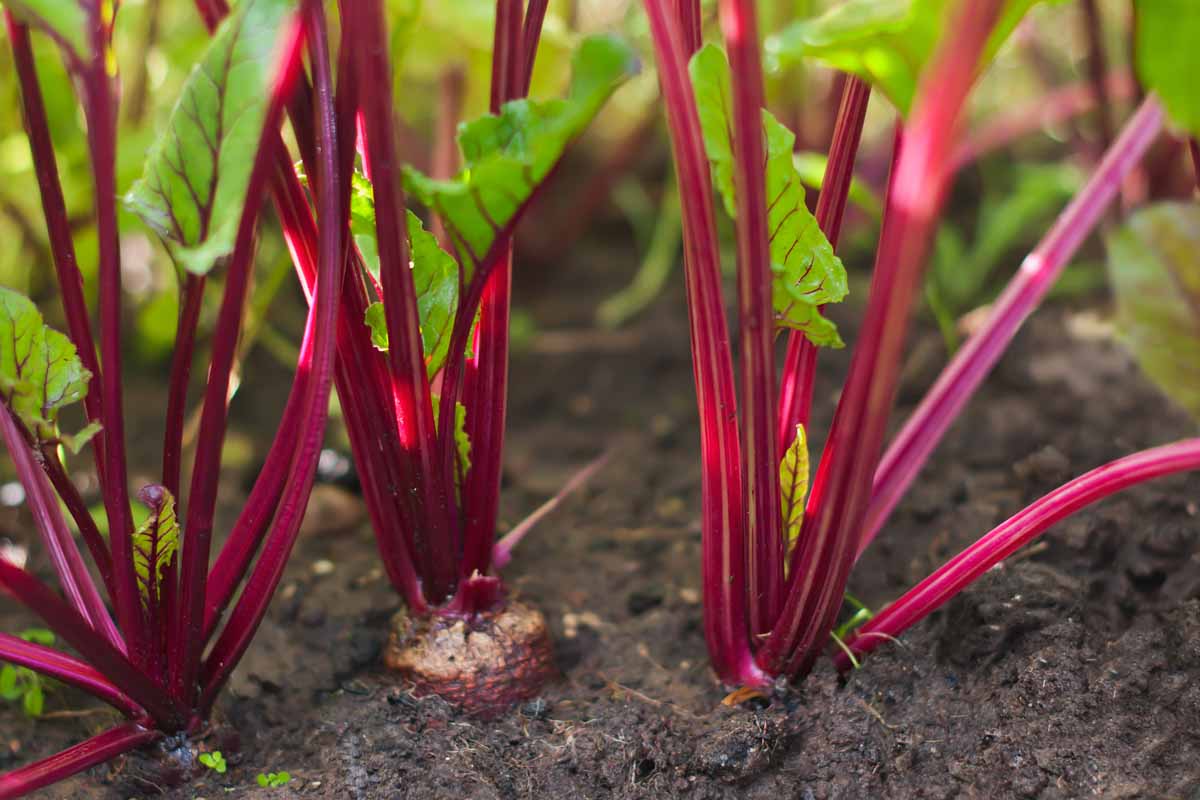
Don’t overlook to comply with the recommendation in our information to rising beets for greatest gardening practices.
Tell us the way it goes or when you’ve got any bother figuring out the bugs which are bothering your beets within the feedback beneath. The extra we work collectively, the higher we will shield our treasured crops!
And for extra details about rising beets in your backyard, try these guides subsequent:
